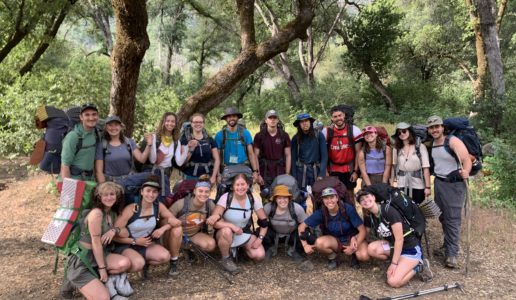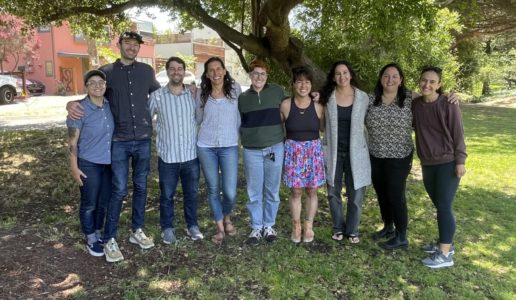High Holiday Tip Sheet by Ken Kramarz
Last week, 800+ parents, children, and staff gathered for a Tawonga-style outdoor Rosh Hashanah service at Joaquin Miller Park in Oakland. Perhaps you read about it in the J Weekly. It was wonderful to witness our unique blend of joyous Judaism and outdoor spirituality transforming children’s feelings about the High Holidays.
At the close of the service, Camp Director Jamie Simon-Harris announced that Tawonga is launching a Bar and Bat Mitzvah program and was immediately mobbed by happy parents. “If you liked this service, you’ll love our B’nai Mitzvahs,” she told them.
Meanwhile, other folks were asking me, “What about Yom Kippur? Is there a Tawonga way to do that as well?”
The answer is “Yes!” and “you can do it yourself.” As our community enters this day of self-reflection and atonement, we’d like to offer a simple activity you can do with your family. If you try it out, please write back and let us know how it went!
On Yom Kippur, we want children to feel that the holiday is a gift, not a burden; to know that giving and getting forgiveness should be done regularly (with Yom Kippur as the annual deadline); and to be able to reflect on their own lives, noticing what they are proud of as well as being aware of areas they would like to improve.
With that in mind, it’s great to start with a story. Take a little walk to a nice outdoor spot, with no distractions, and tell your kids this true story:
“Once upon a time, a wise and very observant rabbi came to Camp Tawonga. He was observant not just in the traditional meaning of following the commandments — he was also observant in the way of noticing. Or, as the staff says at camp, he was always aware. Walking around camp he observed a group of children at the archery range. Each camper came to the shooting station and shot arrows at the targets. When everyone was finished, they walked up to the targets, gathered their arrows, and tried again, hoping to improve their aim the next time around.
This rabbi suddenly had an ‘a-ha’ moment. He realized that this is the big message of the High Holidays. As we go through our lives, the things we choose to do and the intentions we set are like arrows we shoot, hoping to hit a target (In Hebrew, the word for intention is “kavanah” and the root of that is “kivun” which means direction). Now, as the Jewish year begins anew, we are given a chance to improve our aim and try again.
The great rabbi was so grateful for the inspiration he received at camp that he went right back to his synagogue and gave such a moving sermon about his experience that people are still re-telling that story today.”
After a story, it’s nice to engage further through a fun exercise. For this, all you need is some blank paper and markers (If you don’t like to write on Yom Kippur, you can use a stick and draw on the ground).
Give each child (and yourself) an 8 ½ by 11 sheet of paper and ask them to fold it in half, then fold it in half again. Unfold it flat so now there are four quarters. With a marker, draw an archery target in each quarter (a few concentric circles with a bull’s eye in the center). Ask them to label each quarter with the four pillars of the Tawonga Mission: Self, Community, Nature and Spirit. You can show them yours as an example.
Now the children (and you) should ask yourselves, “Have I been my best self this year?” Let them “grade” themselves and then use another color to mark how close to the bull’s eye they think they came this year. Mark your own as well and then share with each other the various successes and shortfalls you experienced this year and how you can improve next year.
Next, in the Community box, think about your relationships with the people around you—family, friends, neighbors—and again, mark the target with your self-assessment of how you think you did. Discuss with each other your great relationships as well as those that need more attention.
In the Nature box, ask yourselves how well you’ve done as a guardian of this beautiful world in which we live. Mark your targets and discuss how you can improve.
Finally, in the Spirit box, reflect on your relationship to the divine, the holy, the universe, or God—whatever expression works best for you. Do you feel connected to the world around you? Mark your targets and compare how each of you feels about this and how you can do better next year.
When you are done—whether or not you’ve chosen to fast—share a really nice meal with family and friends!
From all of us at Camp Tawonga to you and all your loved ones, may you be sealed in the book of life!
Love and l’shanah tovah,
Ken

